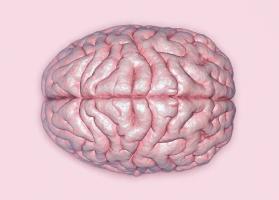Adrenergic receptors: what they are, functions, and types
Adrenergic receptors are a type of receptor to which catecholamines attach.. They are involved in various functions of the sympathetic nervous system, which involves fight and flight responses.
Next we will see in more depth the types and subtypes of these receptors, in addition to explaining what each one of them is involved in.
- Related article: "Neuronal receptors: what they are, types and operation"
What are adrenergic receptors?
Adrenergic receptors, also called adrenoceptors, are receptors that couple to G proteins. The two substances that bind to them are noradrenaline and adrenaline, which are two catecholamines. They are also the place where some drugs of the beta-blocker type, β2 and α2 agonists, used to treat hypertension and asthma, among other medical conditions, are placed.
Many cells in the body contain adrenergic receptors, and catecholamines bind to them, activating the receptor and inducing stimulation of the sympathetic nervous system. This system is responsible for preparing the body for a flight or fight situation, causing the pupils to dilate, the heartbeat and, in essence, the necessary energy is mobilized to be able to survive the potentially dangerous situation or stressful.
- You may be interested in: "Types of neurotransmitters: functions and classification"
History of these receptors
In the 19th century, the idea that stimulation of the sympathetic nervous system could imply several changes in the organism, as long as there were one or several substances that induce this activation. But it was not until the following century that it would be proposed how this phenomenon occurred:
One hypothesis held that there were two different types of neurotransmitters that exerted some effect on sympathetic nerves. Another argued that instead of having two types of neurotransmitters there should be two types of detector mechanisms for the same neurotransmitter, that is, there would be two types of receptors for the same substance, which would imply two types of answers.
The first hypothesis was proposed by Walter Bradford Cannon and Arturo Rosenblueth, who proposed the existence of two neurotransmitters. One, which would be the one that would stimulate, was called sympathin E (for “excitation”) and the other, which would be the one that would inhibit, was sympathin I (for “inhibition”).
The second proposal found support during the period from 1906 to 1913. Henry Hallett Dale had explored the effects of adrenaline, called adrenaline at the time, injected into animals or into the human bloodstream. When injected, this substance increased blood pressure. When the animal was exposed to ergotoxin its blood pressure decreased.
Dale proposed the idea that ergotoxin induced paralysis of myoneural motor junctions, that is, those parts of the body that are responsible for controlling blood pressure. He indicated that, under normal conditions, there was a mixed mechanism that induced both paralysis and its activation, causing either contraction or relaxation depending on the environmental demands and organic needs, and that these responses were made based on whether the same substance had affected one or the other system, implying two different types of answers.
Later, in the 1940s, it was discovered that substances chemically related to adrenaline could induce different types of responses in the body. This belief was strengthened by seeing that the muscles had, in effect, two different types of mechanisms that could imply two different responses to the same compound. The responses were induced based on the type of receptors in which the adrenaline was placed, calling them α and β.
Types of receptors
There are two main groups of adrenoceptors., which are subdivided into 9 subtypes in total:
The αs are classified into α1 (a Gq protein-coupled receptor) and α2 (a Gi protein-coupled receptor).
- α1 has 3 subtypes: α1A, α1B and α1D
- α2 has 3 subtypes: α2A, α2B and α2C
The βs are divided into β1, β2 and β3. All three couple to Gs proteins, but the β2 and β3 receptors also couple to Gi proteins.
circulatory function
epinephrine reacts to both α and β adrenergic receptors, involving different types of responses carried out by the circulatory system. Among these effects are vasoconstriction, related to α receptors, and vasodilatation, related to β receptors.
Although it has been seen that α-adrenergic receptors are less sensitive to epinephrine, when they are activated with a pharmacological dose of this substance, they induce vasodilation mediated by the β-adrenergic. The reason for this is that the α1 receptors are more peripheral than the β receptors, and through this activation with pharmacological doses, they receive the substance before the α receptors than the β receptors. High doses of epinephrine in the bloodstream induce vasoconstriction.
- You may be interested in: "Metabotropic receptors: their characteristics and functions"
subtypes
Depending on the location of the receptors, the muscle response to adrenaline is different. Contraction and relaxation of smooth muscles is generally low.. Cyclic adenosine monophosphate has different effects on smooth muscle than on cardiac muscle.
This substance, when found in high doses, contributes to the relaxation of smooth muscle, increasing also contractility and heartbeat in the cardiac musculature, an effect, at first glance, counterintuitive.
α receptors
The different α receptor subtypes have actions in common. Among these common actions are, as main, the following:
- Vasoconstriction.
- Reduced mobility of smooth tissue in the gastrointestinal tract.
Some α agonist substances can be used to treat rhinitis, because they decrease the secretion of mucus. α Antagonist substances can be used to treat pheochromocytoma, since they decrease the vasoconstriction caused by norepinephrine that occurs in this medical condition.
1. α1 receptor
The main action played by α1 receptors involves contraction of smooth muscle. They cause vasoconstriction of many veins, including those found in the skin, the gastrointestinal system, the renal artery, and the cerebral veins. Other areas where smooth muscle contraction can occur are:
- Ureter
- Different conductor.
- Hairy muscles.
- pregnant uterus
- Urethral sphincter.
- Bronchioles.
- Veins of the ciliary body.
The α1 antagonists, that is, those substances that when coupled induce actions contrary to those that the agonists would carry out, are used to treat hypertension, inducing a decrease in blood pressure, and also benign prostatic hyperplasia.
2. α2 receptor
The α2 receptor couples to Gi/o proteins. This receptor is presynaptic, inducing negative feedback effects, that is, control, on adrenergic substances such as norepinephrine.
For example, when norepinephrine is released into the synaptic gap, it activates this receptor, causing the release of norepinephrine from the presynaptic neuron to be decreased and, thus, avoiding an overproduction that implies negative effects on the body as a whole.
Among the actions of the α2 receptor are:
- Decrease the release of insulin in the pancreas.
- Increase the release of glucagon in the pancreas.
- Contraction of the sphincters of the gastrointestinal tract.
- Control of norepinephrine release in the central nervous system.
- Increase platelet aggregation.
- Decrease peripheral vascular resistance.
α2 Agonist Substances May Be Used to Treat Hypertension, since they lower blood pressure by increasing the actions of the sympathetic nervous system.
Antagonists for these same receptors are used to treat impotence, relaxing the penile muscles and promoting blood flow in the area; depression, since they raise the mood by increasing the secretion of norepinephrine.
β receptors
β receptor agonists are used for heart failure, since they increase the cardiac response in case there is an emergency. They are also used in circulatory shock, redistributing blood volume.
β Antagonists, called beta-blockers, are used to treat cardiac arrhythmia, since they decrease the response of the sinoatrial node, stabilizing cardiac function. As with agonists, antagonists can also be used in heart failure, preventing sudden death related to this condition, which is usually due to ischemia and arrhythmias.
They are also used for hyperthyroidism, reducing excessive peripheral synaptic response.. In migraine they are used to reduce the number of attacks of this type of headache. In glaucoma they are used to reduce the pressure inside the eyes.
1. β1 receptor
Increases cardiac response by increasing heart rate, conduction velocity, and stroke volume.
2. β2 receptor
The actions of the β2 receptor include:
- Relaxation of the smooth muscle of the bronchi, gastrointestinal tract, veins and skeletal muscle.
- Lipolysis of adipose tissue (fat burning).
- Relaxation of the uterus in non-pregnant women.
- Glycogenolysis and gluconeogenesis.
- Stimulates the secretion of insulin.
- Contraction sphincters of the gastrointestinal tract.
- Immunological communication of the brain.
β2 Agonists are used to treat:
- Asthma: reduce bronchial muscle contraction.
- Hyperkalemia: Increases cellular potassium uptake.
- Premature labor: reduce the contraction of the uterine smooth muscle.
3. β3 receptor
Among the actions of β3 are increase lipolysis of adipose tissue and relaxation of the bladder.
β3 receptor agonists can be used as weight loss drugs, although their effect is still being studied and has been linked to a worrisome side effect: tremors in extremities.
Bibliographic references:
- Adam, a. and Prat, G. (2016). Psychopharmacology: Mechanism of action, effect and therapeutic management. Barcelona, Spain. Marge Medical Books.


